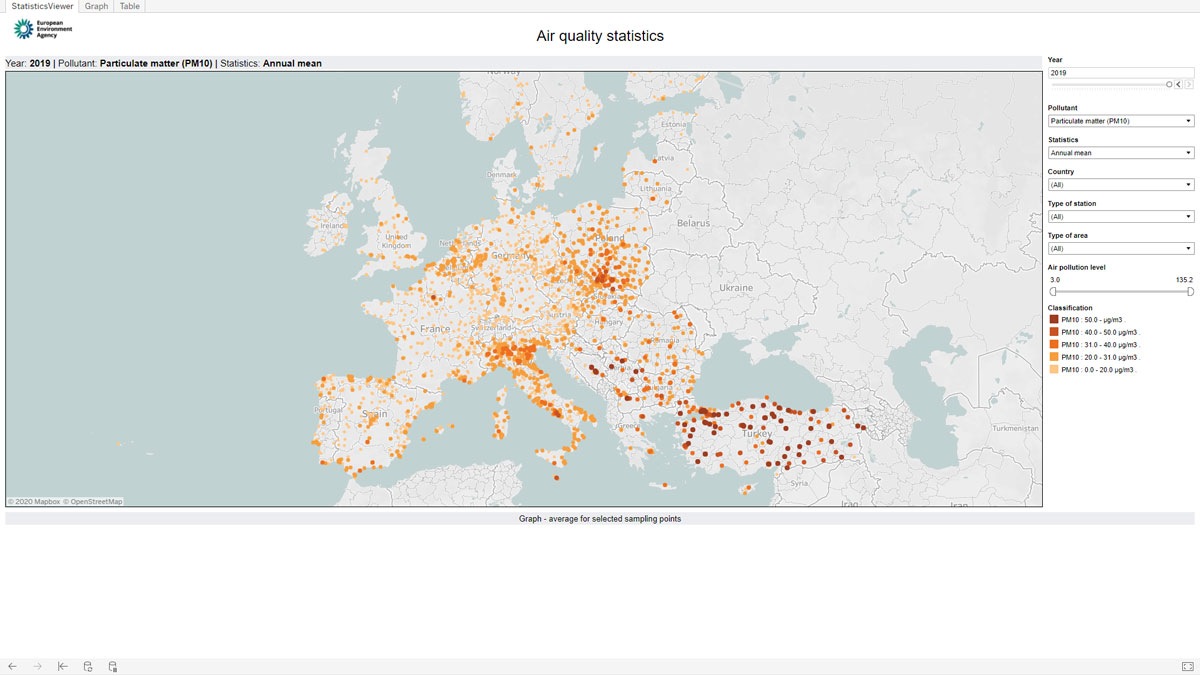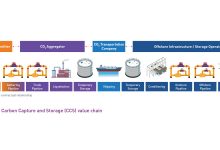Improvement in Europe’s Air Quality Over Past Decade
Better air quality has led to a significant reduction of premature deaths over the past decade in Europe. However, the European Environment Agency’s (EEA) latest official data show that almost all Europeans still suffer from air pollution, leading to about 400,000 premature deaths across the continent.
The EEA’s ‘Air quality in Europe — 2020 report’ shows that six Member States exceeded the European Union’s limit value for fine particulate matter (PM2.5) in 2018: Bulgaria, Croatia, Czechia, Italy, Poland, and Romania. Only four countries in Europe — Estonia, Finland, Iceland, and Ireland — had fine particulate matter concentrations that were below the World Health Organization’s (WHO) stricter guideline values. The EEA report notes that there remains a gap between EU’s legal air quality limits and WHO guidelines, an issue that the European Commission seeks to address with a revision of the EU standards under the Zero Pollution Action Plan.
The new EEA analysis is based on the latest official air quality data from more than 4,000 monitoring stations across Europe in 2018.
Exposure to fine particulate matter caused about 417,000 premature deaths in 41 European countries in 2018, according to the EEA assessment. About 379,000 of those deaths occurred in EU-28 where 54,000 and 19,000 premature deaths were attributed to nitrogen dioxide (NO2) and ground-level ozone (O3), respectively. (The three figures are separate estimates, and the numbers should not be added together to avoid double counting.)
EU, national and local policies, and emission cuts in key sectors have improved air quality across Europe, the EEA report shows. Since 2000, emissions of key air pollutants, including nitrogen oxides (NOx), from transport have declined significantly, despite growing mobility demand and associated increase in the sector’s greenhouse gas emissions. Pollutant emissions from energy supply have also seen major reductions while progress in reducing emissions from buildings and agriculture has been slow.
Thanks to better air quality, around 60,000 fewer people died prematurely due to fine particulate matter pollution in 2018, compared with 2009. For nitrogen dioxide, the reduction is even greater as premature deaths have declined by about 54% over the last decade. The continuing implementation of environmental and climate policies across Europe is a key factor behind the improvements.
“It is good news that air quality is improving thanks to the environmental and climate policies that we have been implementing. But we can’t ignore the downside – the number of premature deaths in Europe due to air pollution is still far too high. With the European Green Deal, we have set ourselves an ambition of reducing all kinds of pollution to zero. If we are to succeed and fully protect people’s health and the environment, we need to cut air pollution further and align our air quality standards more closely with the recommendations of the World Health Organization. We will look at this in our upcoming Action Plan,” said Virginijus Sinkevičius, Commissioner for Environment, Oceans and Fisheries.
“The EEA’s data prove that investing in better air quality is an investment for better health and productivity for all Europeans. Policies and actions that are consistent with Europe’s zero pollution ambition, lead to longer and healthier lives and more resilient societies,” added Hans Bruyninckx, EEA Executive Director.
The European Commission has recently published a roadmap for the EU Action Plan Towards a Zero Pollution Ambition, which is part of the European Green Deal.
Air quality and COVID-19
The EEA report also contains an overview of the links between the COVID-19 pandemic and air quality. A more detailed assessment of provisional EEA data for 2020 and supporting modelling by the Copernicus Atmospheric Monitoring Service (CAMS), confirms earlier assessments showing up to 60% reductions of certain air pollutants in many European countries where lockdown measures were implemented in the spring of 2020. The EEA does not yet have estimates on the potential positive health impacts of the cleaner air during 2020.
The report also notes that long-term exposure to air pollutants causes cardiovascular and respiratory diseases, which both have been identified as risk factors for death in COVID-19 patients. However, the causality between air pollution and severity of the COVID-19 infections is not clear and further epidemiological research is needed.
Background
The EEA’s briefing, EEA’s health risk assessments of air pollution, provides an overview of how the EEA calculates its estimates on the health impacts of poor air quality.
The health impacts of exposure to air pollution are diverse, ranging from inflammation of the lungs to premature deaths. The World Health Organization is evaluating the increasing scientific evidence that links air pollution to different health impacts to propose new guidelines.
In the EEA’s health risk assessment, mortality is selected as the health outcome that is quantified, as it is the one for which the scientific evidence is most robust. Mortality due to the long-term exposure to air pollution is estimated using two different metrics: ‘premature deaths’ and ‘years of life lost’. These estimates provide a measure of the general impact of air pollution across a given population and, for example, the numbers cannot be assigned to specific individuals living in a specific geographical location.
The health impacts are estimated separately for the three pollutants (PM2.5, NO2 and O3). These numbers cannot be added together to determine total health impacts, as this may lead to double counting of people who are exposed to high levels of more than one pollutant.








